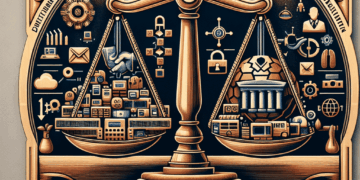Critical infrastructures (KRITIS) are organizations or facilities that are important for the state community and whose failure or impairment would result in lasting supply bottlenecks, significant disruptions to public safety or other dramatic consequences. In Germany, the protection of critical infrastructures is considered a central task of national and public security.
- Critical infrastructures are crucial for the state community and their failure has serious consequences.
- Important legal foundations are the BSI Act and the IT Security Act.
- Nine sectors are considered KRITIS: energy, transportation, health, etc.
- KRITIS operators must meet specific thresholds, e.g. in supply and business.
- The BSI defines minimum standards and supports KRITIS operators with IT security.
- Cybersecurity and technological change are major challenges.
- The protection of critical infrastructures is essential for national security and economic stability.
Legal basis
1. the BSI Act (BSIG)
2 IT Security Act (ITSiG)
3rd Ordinance on the Determination of Critical Infrastructures under the BSI Act (BSI-KritisV)
4. sector-specific laws and regulations
KRITIS sectors
In Germany, the following nine sectors are defined as critical infrastructures:
1. energy
2. Information Technology and Telecommunications
3. Transportation and traffic
4. Health
5. Water
6. Food
7. Finance and insurance
8. Government and administration
9. Media and culture
Criteria for KRITIS operators
Classification as a KRITIS operator is based on specific threshold values defined in the BSI-KritisV. These thresholds often relate to:
1. level of supply (e.g. number of people supplied)
2. economic significance
3. Technical capacities
Obligations of KRITIS operators
1. implementation of appropriate organizational and technical precautions to avoid disruptions
2. reporting significant IT security incidents to the BSI
3. appointment of a contact person for the BSI
4. regular proof of compliance with IT security requirements
Role of the Federal Office for Information Security (BSI)
1. definition of minimum standards for IT security
2. advice and support for KRITIS operators
3. receiving and analyzing reports of IT security incidents
4. conducting inspections and audits
Challenges for KRITIS operators
1. complexity: Increasing networking and interdependencies between different infrastructures
2. cyber security: growing threat from cyber attacks
3. technological change: the need to continuously adapt to new technologies
4. regulatory requirements: Compliance with constantly evolving legal requirements
5. resource allocation: balancing security investments with other operational priorities
Significance for national security
1. ensuring security of supply
2. protection against terrorism and sabotage
3. maintenance of public order
4. ensuring economic stability
5. strengthening resilience to natural disasters and technical disruptions
International dimension
1. the EU Network and Information Security Directive (NIS Directive)
2. cross-border cooperation for the protection of critical infrastructures
3. harmonization of standards and best practices at international level
Future prospects
1. increased integration of AI and machine learning in protection concepts
2. development of cross-sectoral resilience strategies
3. increasing importance of public-private partnerships in KRITIS protection
4. adaptation to new threat scenarios (e.g. climate change, pandemics)
Importance for companies
1. compliance: KRITIS operators must fulfill extensive regulatory requirements
2. investments: Need for significant investment in security and resilience
3. reputation management: CRITIS status can be both an opportunity and a risk for a company’s reputation
4. drivers of innovation: KRITIS requirements can promote innovation in security technologies
5. human resources development: need for specialists in critical infrastructure protection
Conclusion
The protection of critical infrastructures is a key challenge for Germany’s national security and economy. The complexity and interconnectedness of modern infrastructures require a holistic approach that encompasses technical, organizational and regulatory measures. For KRITIS operators, this means increased requirements and responsibilities on the one hand, but also the opportunity to take on a pioneering role in terms of security and resilience on the other. Continuous adaptation to new threat scenarios and technological developments will remain a key task in the future. The protection of critical infrastructures will therefore remain a key issue for Germany’s security and economic policy and requires close cooperation between the state, business and society.





















